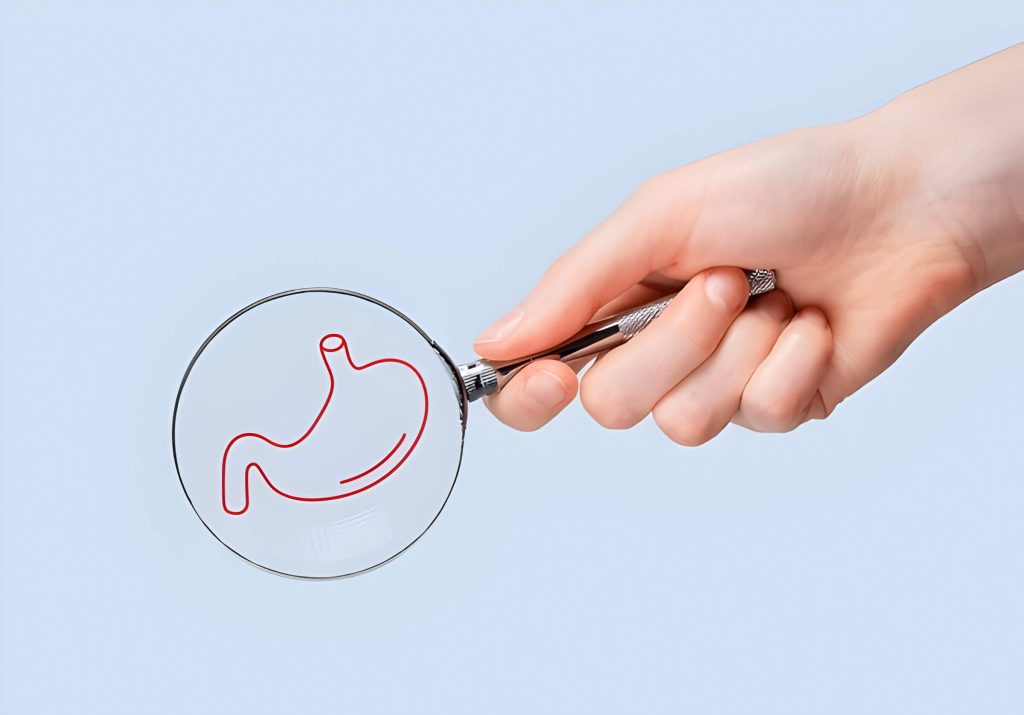Gastritis, a condition characterized by inflammation of the stomach lining, can cause significant discomfort and digestive issues for those affected. To alleviate symptoms and promote healing, many healthcare professionals recommend following a bland diet. This dietary approach focuses on easily digestible, gentle foods that soothe the stomach and reduce irritation. In this article, we’ll explore the key principles of a bland diet for gastritis, provide meal suggestions, and highlight foods to avoid, offering valuable guidance for those seeking relief from this common digestive ailment.
Understanding Gastritis and the Need for a Bland Diet

Gastritis is a condition characterized by inflammation of the stomach lining, often causing discomfort and digestive issues. Common symptoms include abdominal pain, nausea, vomiting, and a feeling of fullness. Various factors can contribute to gastritis, such as excessive alcohol consumption, prolonged use of certain medications, or bacterial infections like H. pylori.
To manage gastritis and alleviate symptoms, doctors often recommend following a bland diet. This dietary approach aims to reduce stomach acid production and minimize irritation to the inflamed stomach lining. A bland diet typically consists of easily digestible, low-fiber foods that are gentle on the digestive system.
The benefits of a bland diet for gastritis patients are numerous. It can help reduce stomach inflammation, ease discomfort, and promote healing of the stomach lining. Additionally, this diet can prevent further irritation and allow the digestive system to rest and recover.
When following a bland diet, individuals should focus on consuming soft, low-fat foods while avoiding spicy, acidic, or high-fiber options that may exacerbate symptoms. By adhering to these dietary guidelines, patients can effectively manage their gastritis and support their overall digestive health.
Key Principles of a Bland Diet for Gastritis
A bland diet is often recommended for individuals suffering from gastritis to alleviate symptoms and promote healing. This dietary approach focuses on consuming low-acid foods, easily digestible meals, soft foods, and non-irritating ingredients. The primary goal is to reduce stomach acid production and minimize irritation to the stomach lining.
Key principles of a bland diet for gastritis include:
- Choosing low-acid foods: Opt for foods with a higher pH level, such as bananas, melons, and oatmeal, to avoid triggering excess stomach acid production.
- Incorporating easily digestible meals: Select foods that are gentle on the digestive system, like lean proteins, cooked vegetables, and rice.
- Emphasizing soft foods: Consume foods with a softer texture, such as mashed potatoes, yogurt, and cooked cereals, to reduce strain on the stomach.
- Avoiding non-irritating ingredients: Steer clear of spicy, fatty, and acidic foods that can aggravate the stomach lining.
- Eating smaller, more frequent meals: This approach helps prevent overloading the stomach and reduces acid production.
By adhering to these principles, individuals with gastritis can help manage their symptoms and support the healing process. It’s important to consult with a healthcare professional or registered dietitian for personalized advice on implementing a bland diet effectively.
Breakfast Options on a Bland Diet
When following a bland diet, breakfast can still be both nutritious and satisfying. Oatmeal is an excellent choice, offering a gentle start to your day. Try preparing it with water or low-fat milk and add a touch of honey for sweetness. For variety, experiment with different oatmeal recipes, such as adding mashed bananas or a sprinkle of cinnamon.
Low-fat yogurt is another suitable option, providing protein and probiotics. Pair it with sliced bananas for added nutrients and natural sweetness. Toast with honey is a simple yet comforting choice; opt for whole-grain bread for added fiber.
For those seeking a protein-rich breakfast, scrambled eggs prepared with minimal seasoning can be a good fit. Cook them gently and pair with toast for a balanced meal. Remember to avoid adding spices or fats that might irritate your digestive system.
These breakfast options not only adhere to bland diet guidelines but also offer essential nutrients to start your day on the right foot. Always consult with your healthcare provider to ensure these choices align with your specific dietary needs.
Lunch Ideas for Gastritis Sufferers
For those managing gastritis, finding suitable lunch options can be challenging. However, there are several delicious and stomach-friendly meals to consider. Chicken breast recipes are excellent choices, as they’re lean and easily digestible. Try grilled or baked chicken with minimal seasoning for a safe yet satisfying meal.
Steamed vegetables are another fantastic option, providing essential nutrients without irritating the stomach lining. Pair them with rice dishes, which are gentle on the digestive system and can help absorb excess stomach acid. Brown rice offers additional fiber, but white rice may be better tolerated by some individuals.
Lean fish options, such as cod or tilapia, are also great for gastritis sufferers. These can be baked or poached with herbs for added flavor without causing discomfort. Clear soups, like vegetable or chicken broth, can be soothing and hydrating, making them an ideal lunch choice, especially when paired with soft, well-cooked vegetables or small pasta shapes.
Remember to eat slowly, chew thoroughly, and avoid overly large portions to help manage gastritis symptoms during lunchtime.
Dinner Suggestions for a Bland Diet
When following a bland diet, it’s essential to choose foods that are easy to digest and unlikely to cause irritation. Here are some dinner suggestions that align with these principles:
- Baked potato: A simple, versatile option that can be topped with a small amount of butter or low-fat sour cream for added flavor.
- Lean turkey: Grilled or roasted turkey breast provides a good source of protein without excess fat or seasoning.
- Cooked carrots: Steamed or boiled carrots offer a mild, slightly sweet vegetable option that’s gentle on the stomach.
- White fish: Baked or poached white fish, such as cod or tilapia, is a light and easily digestible protein source.
- Plain pasta: Opt for white pasta without heavy sauces, perhaps with a drizzle of olive oil and a sprinkle of Parmesan cheese for taste.
Remember to avoid spicy, fried, or highly seasoned foods when following a bland diet. These dinner suggestions can be mixed and matched to create balanced, soothing meals that support digestive health while still providing necessary nutrients.
Snacks and Beverages Compatible with a Bland Diet
When following a bland diet, it’s essential to choose snacks and beverages that are gentle on the digestive system. Applesauce is an excellent option, providing a smooth texture and mild flavor while offering some nutritional benefits. Crackers, particularly those made from refined grains, can be a good choice for a light and easily digestible snack.
Staying hydrated is crucial, and water is always the best choice. For those seeking a warm beverage, herbal teas like chamomile or peppermint can be soothing and compatible with a bland diet. However, it’s important to avoid caffeinated or strongly flavored teas.
Non-citrus fruits, such as bananas, melons, and cooked pears, can add variety to your diet while being gentle on the stomach. These fruits provide essential vitamins and minerals without the acidity that might irritate a sensitive digestive system.
Remember to introduce new foods gradually and pay attention to how your body responds. Always consult with a healthcare professional or dietitian for personalized advice on managing your bland diet.
Foods to Avoid When Following a Bland Diet for Gastritis
When following a bland diet for gastritis, it’s crucial to avoid certain foods that can irritate the stomach lining and exacerbate symptoms. Spicy foods are a primary culprit, as they can increase stomach acid production and cause discomfort. It’s best to steer clear of hot peppers, curry, and other spice-heavy dishes.
Acidic fruits, such as citrus fruits, tomatoes, and pineapples, should also be limited or avoided altogether. These fruits can increase stomach acidity and potentially worsen gastritis symptoms. Similarly, caffeine-containing beverages like coffee, tea, and energy drinks can stimulate acid production and should be consumed sparingly, if at all.
Alcohol is another substance to eliminate from your diet when managing gastritis. It can irritate the stomach lining and interfere with the healing process. Fatty foods, including fried items, high-fat dairy products, and greasy meats, should also be avoided as they can be difficult to digest and may increase inflammation in the stomach.
By being mindful of these food groups and making appropriate dietary choices, individuals with gastritis can help reduce symptoms and promote healing of the stomach lining.
Sample 7-Day Bland Diet Menu Plan

A well-planned 7-day bland diet menu can help alleviate symptoms of gastritis while ensuring balanced nutrition. Here’s a sample weekly meal plan with gastritis-friendly recipes and appropriate portion sizes:
Day 1 (Bland Diet Menu for Gastritis):
Breakfast: Oatmeal with sliced bananas
Lunch: Baked chicken breast with steamed rice and carrots
Dinner: Poached fish with mashed potatoes and green beans
Day 2 (Bland Diet Menu for Gastritis):
Breakfast: Scrambled eggs with whole-grain toast
Lunch: Turkey sandwich on white bread with avocado
Dinner: Lean beef stew with root vegetables
Day 3 (Bland Diet Menu for Gastritis):
Breakfast: Yogurt with sliced peaches
Lunch: Grilled cheese sandwich with tomato soup
Dinner: Baked tofu with quinoa and steamed broccoli
Day 4 (Bland Diet Menu for Gastritis):
Breakfast: Cream of wheat with applesauce
Lunch: Tuna salad on crackers with cucumber slices
Dinner: Roasted chicken with sweet potato and spinach
Day 5 (Bland Diet Menu for Gastritis):
Breakfast: Banana pancakes with maple syrup
Lunch: Vegetable soup with saltine crackers
Dinner: Baked salmon with rice pilaf and asparagus
Day 6 (Bland Diet Menu for Gastritis):
Breakfast: Smoothie bowl with low-fat milk and berries
Lunch: Egg salad sandwich on white bread
Dinner: Turkey meatballs with pasta and zucchini
Day 7 (Bland Diet Menu for Gastritis):
Breakfast: Rice cereal with sliced pears
Lunch: Chicken noodle soup with saltine crackers
Dinner: Grilled lean steak with baked potato and green peas
Remember to adjust portion sizes based on individual needs and consult with a healthcare professional or dietitian for personalized advice. Stay hydrated with water and herbal teas throughout the week, and avoid spicy, acidic, or fatty foods that may irritate the stomach lining.
Tips for Adhering to a Bland Diet While Dining Out
When following a bland diet, dining out can be challenging, but with careful planning and smart choices, you can still enjoy a meal at a restaurant. Start by selecting establishments known for simple, non-spicy cuisine, such as American diners or family-style restaurants. As you navigate the menu, look for dishes that are grilled, baked, or steamed, avoiding fried or heavily seasoned options.
Don’t hesitate to make special requests. Most restaurants are willing to accommodate dietary needs. Ask for sauces and dressings on the side, or request that your meal be prepared without added spices or seasonings. Safe food options typically include plain grilled chicken or fish, steamed vegetables, rice, and baked potatoes without toppings.
Be cautious with soups and salads, as these often contain hidden ingredients that may not align with a bland diet. When in doubt, ask your server about the ingredients or preparation methods. Remember, it’s always better to err on the side of caution and choose simpler dishes to ensure your dining experience remains comfortable and enjoyable while adhering to your dietary needs.
When to Transition from a Bland Diet

As you progress in your gastritis recovery, you may wonder when it’s appropriate to transition from a bland diet to a more varied eating plan. This process should be gradual and carefully monitored to ensure continued healing and prevent symptom flare-ups.
Begin by slowly reintroducing foods one at a time, allowing a few days between each new addition to observe any potential reactions. Start with easily digestible foods and gradually incorporate more complex options. Pay close attention to how your body responds, noting any recurrence of gastritis symptoms such as abdominal pain, nausea, or bloating.
It’s crucial to maintain a food diary during this transition period, documenting the foods you eat and any symptoms that arise. This information can help you identify trigger foods and guide your dietary choices moving forward.
Remember that everyone’s recovery timeline is different, and what works for one person may not work for another. Always consult your doctor before making significant changes to your diet, especially if you have ongoing symptoms or concerns. Your healthcare provider can offer personalized advice and ensure that you’re transitioning from a bland diet at the appropriate time for your individual case of gastritis.
Embracing a Bland Diet for Gastritis Relief and Healing
Adopting a bland diet can be a crucial step in managing gastritis symptoms and promoting healing of the stomach lining. By focusing on easily digestible, non-irritating foods, you can give your digestive system the respite it needs to recover. Remember that a bland diet is typically a temporary measure, and it’s essential to work closely with your healthcare provider to determine the appropriate duration and specific dietary needs for your condition.
As you gradually reintroduce foods, pay attention to how your body responds and make adjustments accordingly. Keeping a food diary can be helpful in identifying trigger foods and tracking your progress. While a bland diet may seem restrictive at first, it’s important to view it as a positive step towards improved digestive health and overall well-being.
Alongside dietary changes, don’t forget to implement other lifestyle modifications that can support your recovery, such as stress management techniques, regular exercise, and avoiding known irritants like alcohol and tobacco. With patience and persistence, many individuals find significant relief from gastritis symptoms through a combination of dietary adjustments and medical guidance.
